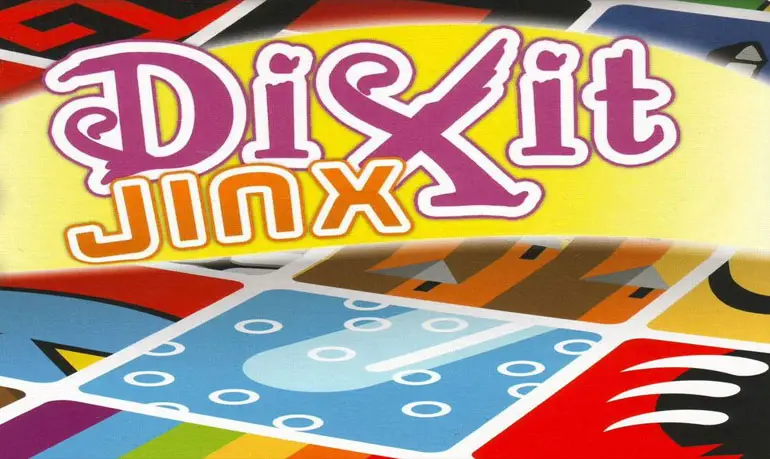
Components
- 9 Position Cards
- 71 double-side Image Cards
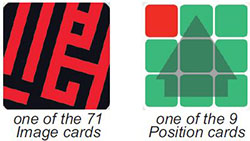
Setup
- With 3 players: 30 Image cards are removed. The other cards make up the draw pile.
- With 4 players: 20 Image cards are removed. The other cards make up the draw pile.
- With 5 players: 10 Image cards are removed. The other cards make up the draw pile.
- With 6 players: all of the Image cards make up the draw pile.
Shuffle the image cards making up the draw pile.
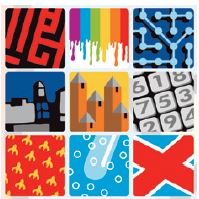
Place 9 of them on the table, making a 3x3 square as shown on the example to the right. The youngest player starts.
He or She is called the active player and takes all of the position cards into his or her hand. The other players each place their index finger on the table.
Game Play
The active player's role
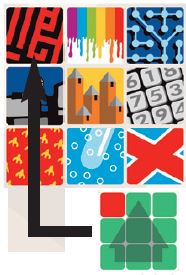
The active player shuffles all of the Position cards, face-down. He or she draws one and looks at it without showing it to the other players. The position card indicates, using a red square, one of the nine images of the square.
The active player will have to make the other players guess which card it is by giving them a clue (a word, a sentence or a gesture) that has a link to the image.
Note: The black arrow on the Position card must always point upwards, perpendicular to the 3x3 square of Image cards.
Finding the active player's card
Once the active player has given the clue, each player must find the image card the active player had to point out as fast as possible.
Each player then places their index finger as quickly as possible on the Image card they believe to be the correct one. Once a player has placed his or her index finger on one of the 9 Image cards, that player can no longer change his or her mind. There can only be one index finger on a card.
If two or more players touch an Image card at the same time, the first one to shout "JINX!" leaves his or her index finger on the card. The other player(s) must then choose a new Image card. As the answers are chosen, the active player says "no" if the Image card isn't the correct one.
The player who answered incorrectly can no longer attempt to answer! However, if it's the right one, the active player says "yes". The game turn then ends.
Note: as long as the right Image card hasn't been found, the players MUST attempt to find the right answer.
Example
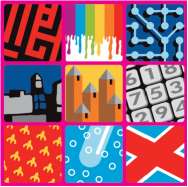
Jack, the active player must identify the card in the upper left corner. If he says "maze" as a clue, the card will be found right away; and he wouldn't score a point.
He'd be better off using a more ambiguous clue, so that some players will pick the wrong card before the correct one gets chosen.
A clue like "intersection " would be better, as some of the other cards also refer to the notion and some player might make a wrong choice.
Scoring
When a player has found the active player's card, he or she takes it and places it in front of him or herself.
The active player takes all of the Image cards wrongly chosen by the players before the right one was found. Those cards are placed in front of him or her.
If no one finds the correct Image card, the active player loses an Image card from in front of him or her (if any) and returns it to the bottom of the deck.
Note: the Image cards pointed at after the active players' card is found are never taken into account.
End of the Turn
All cards selected by players, along with the correct card (if not found), are discarded. Then, a new square of 3 cards by 3 cards is made from cards drawn from the deck. The player to the left of the active player becomes the new active player. A new turn begins.
End of the Game
When the square can no longer be completed using Image cards, the game ends. The player with the most Image cards still in front of him or her wins the game.
Continue Reading


